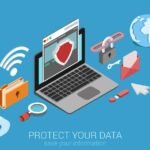In today’s digital world, data is everywhere. From school assessments and business transactions to social media interactions and healthcare records, data drives decisions in almost every industry. But how well do we actually understand the data we use? This article is a beginner-friendly guide to data literacy: what it is, why it matters, and how to build a solid foundation for making informed decisions.
This guide is ideal for educators, NGO professionals, healthcare workers, and managers who are new to the concept of data literacy and want to learn how to work with information more effectively.
What Is Data Literacy?
Data literacy is the ability to read, understand, analyze, and communicate using data. It doesn’t mean you need to become a statistician or learn to code; it means being comfortable asking questions about data, spotting trends, and making better decisions. Just like traditional literacy involves reading and writing, data literacy involves understanding the language of numbers, graphs, and patterns.
This skill is a core competency for anyone who wants to make smarter choices in a data-driven world. For example, a teacher might analyze student test results to tailor lessons for specific needs, while an NGO staffer could review survey data to improve program effectiveness, and a business manager might study customer feedback to refine marketing strategies.
Why Data Is a Powerful Asset
Embracing data is crucial for several key reasons, as it allows organizations to thrive by fostering:
- Informed Decision-Making: When you understand the data, you can spot problems early, test new ideas, and make decisions based on solid evidence, not just assumptions.
- Greater Accountability: Clear data shows what works and what doesn’t. It helps hold teams, projects, and strategies accountable for their results.
- Smarter Resource Allocation: NGOs and schools often operate with limited budgets. Data helps prioritize efforts and allocate funds where they will have the most significant impact.
- Stronger Advocacy and Funding: Solid data is the backbone of convincing grant proposals, influential policy recommendations, and transparent community reports.
In short, leveraging data for decision-making is no longer optional—it’s essential.
Types of Data You May Encounter
Even if you don’t consider yourself a “numbers person,” you already work with different kinds of data every day. Understanding their nature can deepen your insights. The most common types include:
- Quantitative data: This is numerical information, such as numbers, percentages, and counts (e.g., test scores, attendance rates, project budgets).
- Qualitative data: This involves descriptive, non-numerical information like words, feedback, and observations (e.g., student comments, interview transcripts, open-ended survey answers).
- Structured data: This is data that is neatly organized in rows and columns, making it easy to process (e.g., spreadsheets, databases).
- Unstructured data: This data lacks a predefined format and is not neatly organized (e.g., social media posts, emails, audio recordings).
Data in Practice: From Classrooms to Clinics
Let’s see how this looks in a few key fields. Across all sectors, the goal is the same: to turn raw information into actionable knowledge.
In education, schools use data to track student progress, identify learning gaps, and personalize educational journeys. Teachers analyze everything from grades and behavior reports to standardized test scores to better support their students.
For NGOs, nonprofits rely on data to measure their impact, monitor program health, and report results to funders and stakeholders. A well-crafted data dashboard or a thorough baseline survey can become the strategic guide for an entire organization.
In healthcare, clinics and hospitals analyze patient data to improve the quality of care, reduce medical errors, and identify public health trends, such as disease outbreaks or patterns in chronic illness.
In business, from sales numbers and inventory levels to website traffic and customer reviews, companies use data to spot new market opportunities, reduce operational costs, and serve their customers more effectively.
Common Data Pitfalls (and How to Avoid Them)
Working with data requires a critical eye. Even seasoned professionals can fall into common traps that lead to flawed conclusions. Be mindful of these:
- Misinterpreting Visuals: A graph might look impressive, but a manipulated scale can create a misleading impression of change. Always check the axes, sample size, and context.
- Cherry-Picking Results: It’s tempting to focus only on data that supports your initial hypothesis, but this leads to biased and unreliable conclusions.
- Ignoring Outliers: Sometimes, an unusual data point is just an error. Other times, it reveals a deeper issue or a unique opportunity that deserves attention.
- Over-Relying on Averages: An average can be useful, but it often hides important details, like inequality or variation. Always try to explore the full range of the data.
Developing a healthy skepticism and asking “What am I not seeing?” is the first step toward accurate interpretation.
Building Your Data Literacy: Where to Start
You don’t need a data science degree to become data literate. The journey begins with curiosity and consistent practice. Here’s how you can get started:
- Ask Critical Questions: Always ask: Where does this data come from? What does it truly show? What information might be missing?
- Practice Reading Charts: Start with simple bar graphs, pie charts, and line graphs you encounter in reports or news articles. Try to summarize the main point in one sentence.
- Explore User-Friendly Tools: Experiment with accessible platforms like Google Sheets, Airtable, or Datawrapper to organize and visualize small datasets.
- Seek Out Learning Opportunities: Look for beginner-friendly data courses and workshops online. Many platforms like Coursera and Khan Academy offer free introductory modules.
- Collaborate and Discuss: Talk with colleagues who are more experienced with data. Ask them how they use it in their work and learn from their processes.
The key is consistency. The more you engage with data, the more confident and capable you will become.
From Data to Impact: Making Information Your Ally
In a world overflowing with information, data literacy is the compass that helps us navigate complexity and find clarity. It’s not about memorizing formulas or mastering complex software; it’s about cultivating a mindset that values evidence, questions assumptions, and is committed to making informed, thoughtful decisions.
For every professional, this skill unlocks a new level of effectiveness. It transforms you from a passive consumer of information into an active user who can wield data to create change. But data literacy is more than just analysis—it’s about storytelling. It gives you the power to translate numbers into a compelling narrative that can illustrate student growth, demonstrate a program’s impact to funders, or build a business case for a new initiative.
Your journey with data doesn’t require you to become an expert overnight. It starts with a simple first step: embracing curiosity. Begin by asking questions about the data you already have. Use it to answer one small, meaningful question related to your work. With each chart you read and each insight you uncover, you will build the confidence to turn raw information into your most empowering professional tool—one that drives better outcomes for your students, your community, and your organization.







